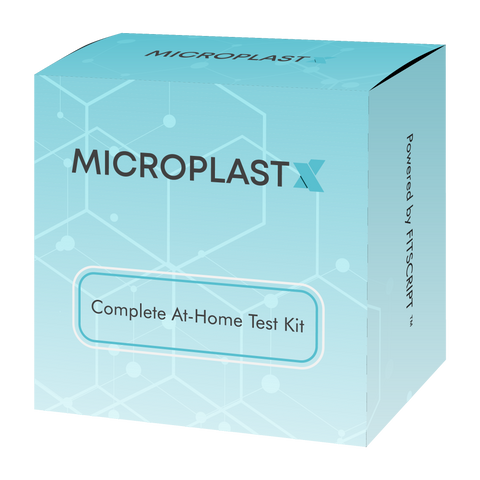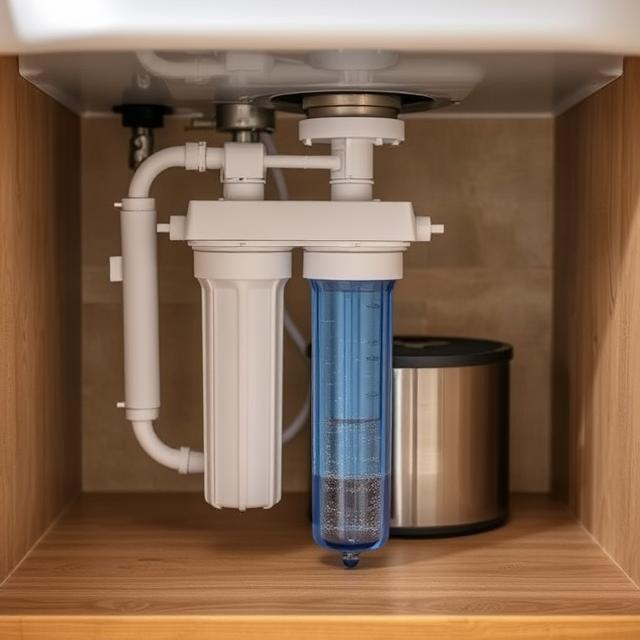How Does Plastic Pollution Affect Humans? Understand the Serious Risks to Your Health
When we talk about how does plastic pollution affect humans, it's essential to first grasp what plastic pollution actually is and, crucially, how it makes its way into our bodies. It’s not just about visible waste on beaches; the most insidious part often involves particles too small to see. This understanding forms the basis for comprehending the human health effects of plastic pollution and the direct impact of plastic on human body.
Plastic pollution refers to the accumulation of plastic objects and particles in the Earth's environment that adversely affects wildlife, wildlife habitat, and humans. It ranges from large items like bottles and bags to microscopic fragments. But how does this pollution reach us? It's a constant, pervasive process:
-
Ingestion through Food and Water: This is a primary pathway. Tiny plastic particles, known as microplastics (less than 5mm) and even smaller nanoplastics, are found in our tap water and bottled water. Seafood, especially shellfish, can contain microplastics because marine animals ingest them. Even processed foods, packaged in plastic, can pick up particles. Research has even shown how microplastics from ultra-processed foods might be accumulating in human brains, as highlighted in recent studies on microplastics in processed food. The World Health Organization (WHO) has also published extensive reports on microplastics in drinking water. So, every meal and drink can contribute to the internal plastic load, leading to significant human health effects of plastic pollution.
-
Inhalation from Air: Microplastics are airborne. They shed from synthetic clothing, carpets, furniture, and tires. When we breathe, particularly indoors where these materials are abundant, we inhale these microscopic fibers and fragments. The impact of air quality on microplastic inhalation is a growing concern, with significant research indicating potential health risks from breathing plastic.
-
Dermal Contact: While less studied, some research suggests that tiny plastic particles from personal care products or clothing might also be absorbed through the skin. Emerging studies are beginning to explore the skin's absorption of microplastics.
Once inside, especially the smaller microplastics and nanoplastics, they don't always pass straight through. They can cross the gut barrier and enter the bloodstream, and from there, they've been detected in various organs. Studies have even found them in the human gut, where they may interact with our microbiome, as explored in research on the impact of microplastics on the human digestive system. Because the human body doesn't have a specific biological pathway to break down plastic, these particles can linger, potentially accumulating over time. This continuous influx is why understanding how does plastic pollution affect humans is so critical, as it directly relates to the accumulating impact of plastic on human body. Take the first step to understand your body's plastic burden with our MicroplastX Microplastics Blood Test Kit.
How Do Microplastics and Nanoplastics Affect Our Organs and Cells?
Once we know how plastic pollution reaches us, the next vital question when considering how does plastic pollution affect humans is: how do microplastics and nanoplastics affect our organs and cells? This gets to the heart of the human health effects of plastic pollution. These microscopic invaders aren't just passing through; they are capable of interacting with our biological systems in ways scientists are just beginning to unravel, leading to a direct impact of plastic on human body.
Here's what current research suggests about their interaction with our internal environment:
-
Cellular Uptake: Nanoplastics, being incredibly small (less than 1 micron), are thought to be able to cross biological barriers more easily than larger microplastics. This means they could potentially enter individual cells, where they might interfere with cellular processes. Insights into nanoplastic interaction with human cells are continually evolving.
-
Inflammation: The presence of foreign particles, even tiny ones, can trigger an inflammatory response in the body. Chronic inflammation is linked to a wide range of diseases. This is a significant area of concern regarding the human health effects of plastic pollution. Research into microplastics and inflammation is expanding.
-
Organ Accumulation: Studies have detected microplastics in various human organs, including the lungs, liver, kidneys, spleen, and even the brain and placenta. While the full implications of this accumulation are not yet clear, their presence suggests potential disruption to normal organ function over time. This directly shows the impact of plastic on human body. Recent findings highlight microplastics in human organs.
-
Chemical Leaching: Plastics often contain chemical additives (like phthalates, bisphenols, flame retardants) which are not chemically bound to the plastic and can leach out. Many of these are known endocrine-disrupting chemicals (EDCs) that can interfere with hormones, affecting metabolism, reproduction, and development. Even if the plastic particle itself is inert, the chemicals it carries or releases can have profound human health effects of plastic pollution. The link between EDCs and plastic exposure is a major focus in environmental health.
Understanding these cellular and organ-level interactions is crucial for fully appreciating how does plastic pollution affect humans. It highlights the invisible but pervasive impact of plastic on human body. For those concerned about their own exposure levels, knowing how to test for microplastics provides a starting point for personal insight.
What Are the Long-Term Health Risks of Plastic Exposure?
Moving beyond how plastic enters the body and its cellular interactions, the ultimate question is: what are the long-term health risks of plastic exposure? This is the most critical aspect when discussing how does plastic pollution affect humans. While research is still ongoing, the accumulating evidence points to a range of potential serious human health effects of plastic pollution and a significant impact of plastic on human body over time.
Based on current scientific understanding, potential long-term health risks include:
-
Endocrine Disruption: Many plastic additives are EDCs. Long-term exposure to these chemicals, even at low doses, can interfere with hormonal balance, potentially affecting reproductive health (fertility issues), metabolic disorders (obesity, diabetes), and even neurological development. The widespread nature of endocrine disrupting chemicals from plastics is a significant public health concern.
-
Increased Inflammation and Oxidative Stress: The persistent presence of microplastics can lead to chronic low-grade inflammation and increased oxidative stress, which are underlying factors in many chronic diseases, including cardiovascular disease and certain cancers. This is a significant area of concern for the human health effects of plastic pollution.
-
Gut Microbiome Alterations: Research suggests that ingested microplastics could potentially alter the delicate balance of the gut microbiome, which is vital for digestion, immunity, and overall health. Changes here could have cascading effects on the impact of plastic on human body. Studies are beginning to explore the complex relationship between microplastics and gut health.
-
Immune System Modulation: Foreign particles can prompt an immune response. Long-term exposure might lead to an overactive or dysregulated immune system, potentially contributing to autoimmune conditions or increased susceptibility to illness.
-
Carcinogenic Potential: Some plastic chemicals are classified as probable human carcinogens. While direct links to human cancer from microplastic particles themselves are not yet definitively established, the chemical burden associated with plastic exposure is a recognized risk. You can find more information on the carcinogenic potential of plastic chemicals.
The long-term human health effects of plastic pollution are a serious concern that underscores the need for both systemic change and personal action. Understanding how does plastic pollution affect humans emphasizes the importance of minimizing exposure where possible. To gain a personal understanding of your exposure, our MicroplastX Microplastics Blood Test Kit offers valuable insight into the impact of plastic on human body.
Who Is Most Vulnerable to the Effects of Plastic Pollution?
When we ask how does plastic pollution affect humans, it's crucial to acknowledge that some individuals and communities bear a disproportionate burden. Understanding who is most vulnerable to the effects of plastic pollution helps us direct our efforts for prevention and mitigation. The human health effects of plastic pollution aren't felt equally across the globe or even within communities, making the impact of plastic on human body a matter of environmental justice.
Several groups face heightened risks:
-
Children and Infants: This is perhaps the most vulnerable group. Their bodies are still developing, and their detoxification systems are immature. Children's behavior, like mouthing objects, increases exposure. Microplastics have been found in baby formula prepared with plastic bottles, and even in infant feces at higher levels than adults. The presence of microplastics in placentas also means exposure can begin before birth.
-
Pregnant Women: Exposure during pregnancy is a significant concern because plastic chemicals (like EDCs) can cross the placental barrier, potentially affecting fetal development. This underscores the profound impact of plastic on human body at its earliest stages.
-
Occupational Workers: Individuals working in industries that produce, use, or recycle plastics (e.g., manufacturing plants, waste management facilities) often face chronic, higher-level exposure to plastic particles and associated chemicals through inhalation and skin contact. This constant exposure can lead to severe human health effects of plastic pollution.
-
Low-Income Communities and Communities of Color: These communities are frequently located near plastic production facilities, waste dumps, and incinerators, leading to disproportionate exposure to pollution from the entire plastic lifecycle. Environmental injustice means they often bear the brunt of the impact of plastic on human body.
-
Coastal and Fishing Communities: Populations heavily reliant on seafood diets may ingest more microplastics through contaminated fish and shellfish. Coastal regions are also often inundated with plastic debris, increasing local exposure.
Recognizing who is most vulnerable to the effects of plastic pollution is vital for targeted interventions and advocating for policies that protect those at greatest risk. If you fall into one of these categories and are concerned about your own levels, our MicroplastX Microplastics Blood Test Kit offers a tangible way to assess your personal burden.
How Do Researchers Measure the Impact of Plastic on Human Health?
It’s one thing to know how does plastic pollution affect humans generally, but how do researchers actually measure the impact of plastic on human health? This is a challenging field, as methods for assessing the human health effects of plastic pollution are still evolving. Scientists employ a variety of techniques to understand the complex impact of plastic on human body.
Here's how researchers are working to measure this impact:
-
Human Sample Analysis:
-
Blood and Tissue Biopsies: This is a rapidly developing area. Researchers analyze human blood, lung tissue, placenta, and other organs to detect the presence, type, and concentration of microplastics and nanoplastics. Techniques often involve sophisticated spectroscopy (like FTIR and Raman microscopy) or pyrolysis-GC/MS to identify plastic polymers. Our own MicroplastX Microplastics Blood Test Kit directly contributes to this understanding by allowing individuals to assess their personal levels.
-
Fecal and Urine Samples: Analyzing waste products can give an indication of ingested and potentially excreted microplastics.
-
Cellular and Animal Studies (In Vitro and In Vivo):
-
Cell Culture Studies: Scientists expose human cells grown in laboratories to microplastics and nanoplastics to observe cellular responses, such as inflammation, oxidative stress, DNA damage, and changes in gene expression. This helps pinpoint potential mechanisms of harm at a foundational level.
-
Animal Models: Studies on mice, rats, and other animals are crucial for understanding how microplastics behave within a living organism – how they are absorbed, distributed, metabolized, and excreted, and their effects on organs, reproduction, and overall health.
-
Epidemiological Studies: These studies look at populations to identify correlations between plastic exposure and health outcomes. This often involves assessing exposure through dietary questionnaires or environmental monitoring and linking it to disease incidence. While challenging due to the ubiquity of plastic, these studies are vital for understanding real-world human health effects of plastic pollution.
-
Biomonitoring for Chemical Additives: Researchers measure levels of plastic-associated chemicals (like BPA, phthalates) in human urine, blood, and other samples. Since many of these chemicals are known endocrine disruptors, this provides a critical indirect measure of the impact of plastic on human body.
While there's still much to learn, these methods are collectively building a clearer picture of how does plastic pollution affect humans, guiding future research and interventions.
Can a Microplastic Test Reveal If Plastic Pollution Has Affected You?
A very direct question arises from the growing concern: can a microplastic test reveal if plastic pollution has affected you? The answer is nuanced, but incredibly important for understanding the true value of personal plastic contamination testing. Yes, a microplastic test can absolutely reveal the presence of plastic particles in your system, which is a direct sign of exposure to plastic pollution and its impact on human body.
Here's what a test like the MicroplastX Microplastics Blood Test Kit can tell you:
-
Confirmation of Presence: The most immediate and significant insight is confirming that microplastics are indeed present in your bloodstream. Given the pervasiveness of plastic, it's expected that most people will have some level of these particles. But knowing your specific level, and the types of plastics found, moves it from an abstract concept to a personal reality. This directly confirms the human health effects of plastic pollution through exposure.
-
Quantification of Exposure: The test provides a measurement of the number and types of plastic particles detected. This allows for a baseline assessment, which is crucial for tracking progress if you implement a detox plan. It tells you how much of an impact plastic pollution has had on you.
-
Identifying Specific Plastic Types: Knowing the polymer types (e.g., PET, PE, PP) can offer clues about potential sources in your daily life (e.g., PET from bottled water, PE from packaging). This helps you refine your efforts to reduce future exposure, making your personal detox plan more targeted.
-
Motivation for Change: For many, seeing tangible results from a test provides a powerful motivation to make lifestyle changes and reduce their plastic footprint. It transforms the abstract idea of environmental pollution into a personal health concern.
What a microplastic test doesn't directly tell you (yet) is the precise health effect those specific plastic particles are having on your body. The science on the direct causal link between internal microplastic levels and specific diseases is still evolving. However, the presence of these foreign particles is a clear indicator of exposure, and given the known toxicity of many plastic chemicals and the body's inflammatory response to foreign invaders, their presence is not benign. Therefore, a positive test result is a strong signal to take proactive steps to reduce exposure and support your body's natural detoxification, helping to mitigate the long-term impact of plastic on human body. For more information on how our testing works and what insights it can provide, delve into how to test for microplastics.




